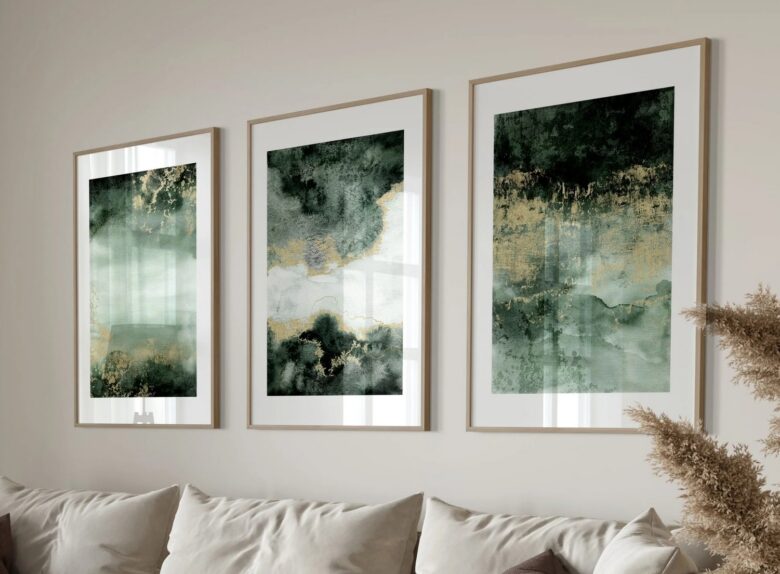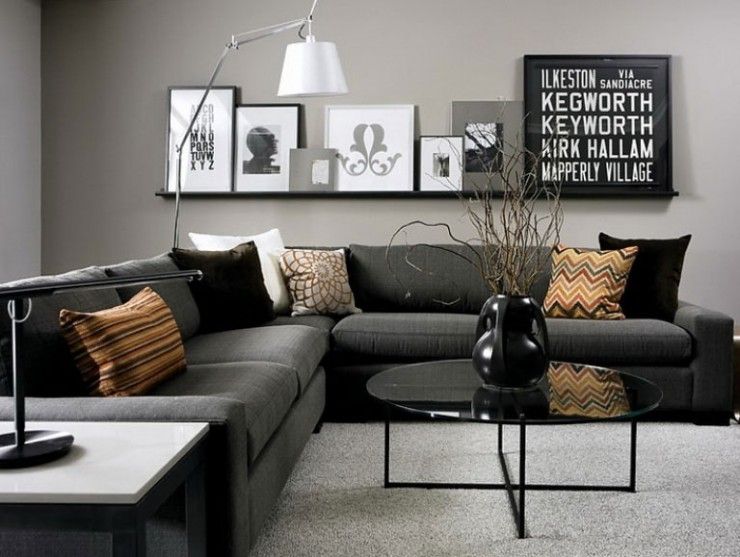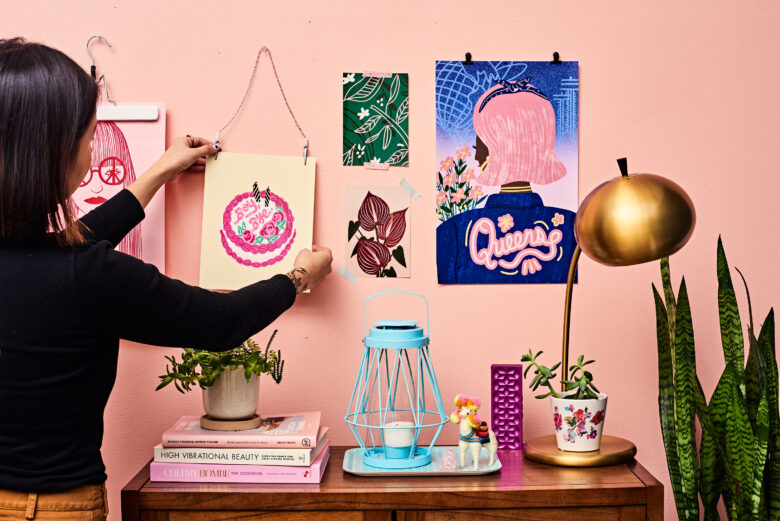Walls can give a room a stylish and sophisticated update – but with so many options, selecting the perfect art for your home can be a daunting task. Fortunately, there are simple ways to find affordable and stylish wall art tailored to your taste – you just need to know where to look! Whether you’re looking for classic, contemporary, or something a little different, here are some tips on how to incorporate wall art into your home decor on a budget.

Source: moonshineprints.co.uk
Contents
Choose the Right Style of Wall Art
When it comes to creating a beautiful wall art collection for your home, choosing the right style is key. While there are many styles of art you can choose from, from abstract to traditional, knowing what type will work best in your space is key. Taking the time to determine what artistic influence will work best in your space can help you choose something that you love and that adds charm and character to the room it’s in.
From classic black-and-white photography to contemporary abstract prints, you can easily find pieces that complement your home decor. If you prefer a more minimalist look, typography posters and line drawings are great options to consider. For those who want to add a pop of color to their space, watercolor prints are a beautiful choice. And if you’re looking to create a bold statement, large-scale canvases featuring influential artwork like Stone & Gray pieces can be a great addition to your wall art prints in South Africa. You can even mix and match different prints to create a gallery wall that showcases your personality and style. Just remember to choose pieces that match your overall color scheme for a cohesive and harmonious look!
Consider Your Budget
Consider it an investment — as artwork can become more valuable — as well as something that should look and feel good for years to come. Make sure to use an appropriate budget that allows you to make the right purchase without breaking the bank. One way to start is by asking yourself: What kind of work do I want? Knowing what style or genre you are interested in will allow you to narrow down your options and help you stay within budget.

Source: moneylion.com
Consider the Color Scheme
Color is key. The art you choose should blend naturally with other hues throughout the space, including the furniture and walls. Consider the primary color of the artwork in relation to the furnishings, flooring, and existing wall paint. Selecting a complementary color that ties your decor together will enhance the room’s atmosphere.
If you opt for framed artwork, keep in mind that dark-colored frames will stand out more than lighter hues, so you can deduct or add pieces accordingly. To lighten up a space with dark furniture, choose light-colored frames or white mats around colorful prints; conversely, if you’re working with light-colored furniture you may find well-toned frames fit better into your overall design scheme.
When choosing artwork to match bright walls like intense reds or yellows, select muted paintings with softened edges in brown tones or pastels that play down bold shades while still keeping them a part of the eventual ensemble. Accents of black also look good on bright-colored walls as long as it is minimalistic.
On darker walls like navy blue or charcoal gray, use warm rich shades from yellow to orange against pale cream-colored mats for an ideal contrast against its rich counterpart. Made an incorrect choice? Remember that picture frames can be painted so experimenting with different colors until you find one desired is possible!

Source: acofesal.org
Select the Right Size and Placement
It should be in proportion to the wall space and other decorative elements, such as furniture and other artwork. If a piece is too large, it can overwhelm the room; if it’s too small, it might seem insignificant and fail to make an impact. To ensure your artwork is the right size, measure first before purchasing or hanging.
When placing wall art, using a level to ensure straightness is key. For a cohesive layout in larger rooms, you can create an imaginary grid of boxes across the wall to arrange your art within. For an eclectic feel, unevenly spaced pieces may be better suited.
Incorporating different layers — such as painting behind shelves or adding fabric behind frames — can add depth to your design while creating a one-of-a-kind look that speaks of you and your style.
Find the right stores
First, decide on the type of design you’d like — abstract art or canvas prints, perhaps — and leave enough blank wall space around it so that the artwork can be appreciated.
From there, you can explore different places to find affordable pieces that work with the overall design of your home. Shopping locally for unique pieces from local artists or flea markets is one of the best ways to score great finds at a lower price point. Plus, if you buy directly from an artist, you can often negotiate prices and customize your piece according to your needs.
Also, consider larger thrift store makeovers and refinishing items such as frames and mirror frames to make them look brand new again. It’s worth spending time scouring bargain bin sales; you may be surprised at what treasures can be unearthed!
Finally, don’t forget to hang homemade artwork–from kids’ drawings hung in frames – or fabric wrapped around empty frames via embroidery hoops. You’d be surprised by how sophisticated these handmade pieces can look when done right!

Source: apartmenttherapy.com
Conclusion
Home decor is often expensive, but you don’t need to break the bank to make an impact. Incorporating wall art into your home can be a great way to express your style and showcase your favorite pieces. From upcycling old frames or simply repurposing items from thrift stores, there are many ways to get creative within a budget-friendly range.
Remember that when it comes to home decor, your goal should be personalizing the space and make it feel comfortable for you and yours. Incorporating wall art into the mix can add subtle pops of color or more wild abstract pieces — both of which will help you create a beautiful atmosphere in your home without breaking the bank. Get creative and have fun with it!
